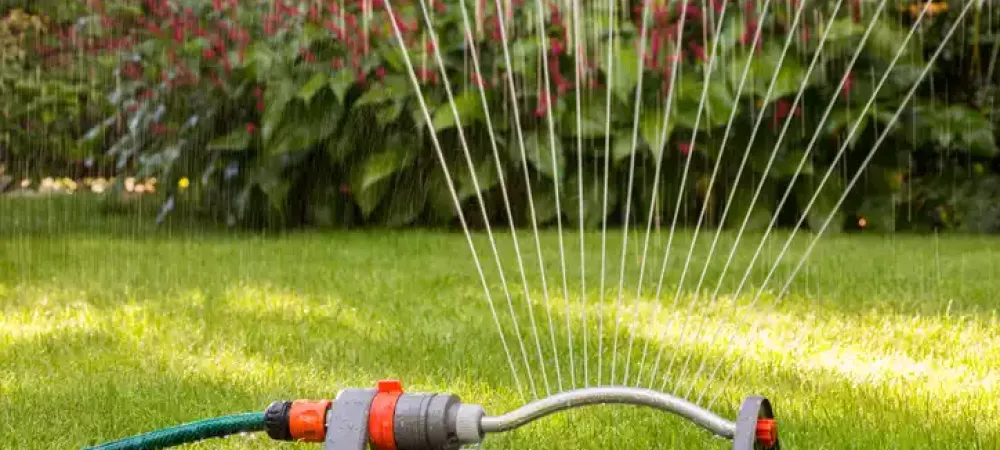How to Water Your Lawn

Watering your lawn in central Indiana is an essential part of maintaining a healthy and beautiful turf. However, there are a few key things to keep in mind when watering your turf.
Soil Type
First, it is important to understand the distinct types of soil in central Indiana. The soil in this area is typically clay or sandy loam, both of which have different water-holding capabilities. Clay soil retains more water, while sandy loam drains more quickly. This means that if you have clay soil, you may not need to water as frequently as someone with sandy loam soil.
Grass Type
You will want to consider the type of turf you have in your lawn. Different types of turf have different water requirements. For example, cool-season grasses, such as Kentucky bluegrass and fescue need more water than warm-season grasses like bermudagrass and zoysia. It is important to research the specific water requirements for the type of grass you have in your lawn, but a general rule of thumb is to irrigate your lawn with 1-1.5 inches of water per week.
When and How Much
When it comes to watering your lawn, there are a few major details to know. First, it is best to water your lawn in the early morning or late evening, when temperatures are cooler, and there is less opportunity for the water to evaporate. Additionally, it is important to water deeply, rather than frequently, to encourage deep root growth. Watering your lawn 1-1.5 inches per week, broken up over two sessions a few days apart per week will be the best approach (e.g. Monday & Thursday). Monitoring your lawn’s soil moisture levels often will assist in determining its irrigation needs. This can be done with a moisture meter or by digging into the soil with a trowel or screwdriver. By monitoring soil moisture levels, you can ensure that you are watering your lawn properly and make any necessary adjustments to your watering schedule. It is also important to be mindful of water conservation when watering your lawn. This means using a water timer to ensure you are not over-watering and checking for leaks in your irrigation system regularly. Proper watering is key to maintaining a healthy, lush lawn in central Indiana.
Irrigation Type
Another important aspect of watering your lawn is to make sure you are using the right type of irrigation system. There are a few different options available including in-ground sprinklers, drip irrigation, soaker hoses, and manual hose with a sprinkler. Each type of system has its own advantages and disadvantages, so it is important to research which one will work best for your lawn.
Bucket Test
Turf needs up to 1.5 inches of water per week broken up over 2 sessions. To measure the output of your sprinkler, use a bucket or a flat bowl. Place the bucket or flat bowl in the direct path of the sprinkler. Turn the sprinkler on and let it run for a predetermined amount of time (e.g., one hour). After the predetermined amount of time has been completed, shut the sprinkler off, and measure how much water has been collected in inches.
Example:
The turf needs 1.5 inches of water per week. The sprinkler ran for 1 hour and collected 0.5 inches of water. The sprinkler needs to run for 3 hours a week, so 1.5 hours per session.
Formula:
1.5 inches per week / (inches per hour) = (irrigation runtime hours per week)
(irrigation run hours per week) / 2 sessions = (irrigation runtime per session)
Conclusion
In addition to watering, there are also a few other things you can do to maintain a healthy lawn in central Indiana. This includes fertilizing your lawn, mowing it with the proper techniques, and providing it with proper drainage. By following these tips and guidelines, you can ensure that your lawn will stay healthy, green, and beautiful for years to come. If you are looking for professional lawn care services to help with fertilization, weed control, and more, contact Pro-Turf Indiana!
